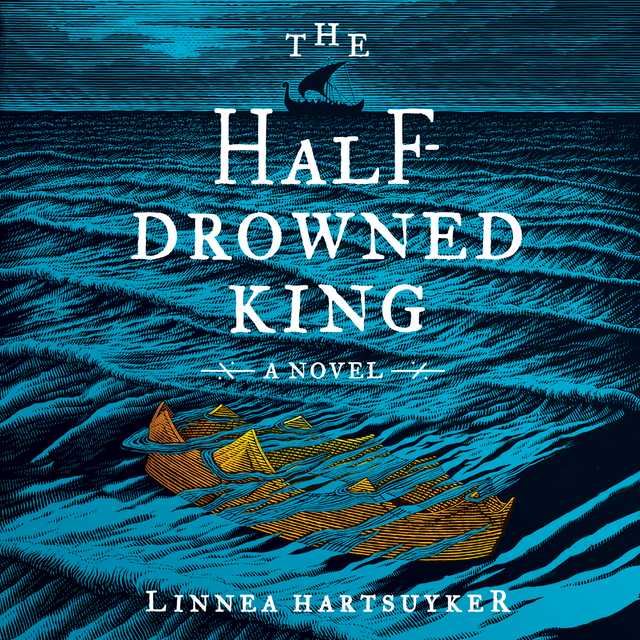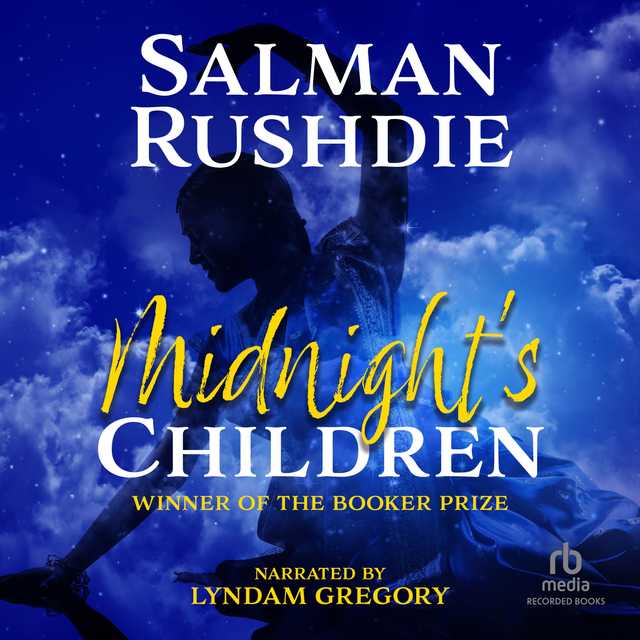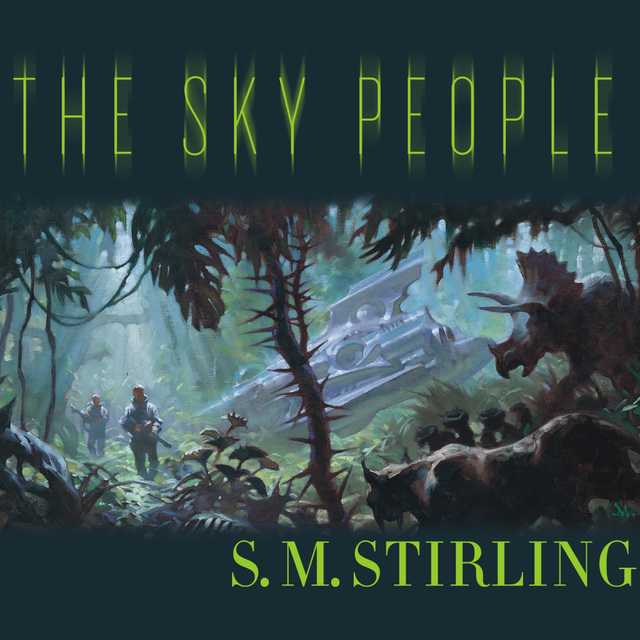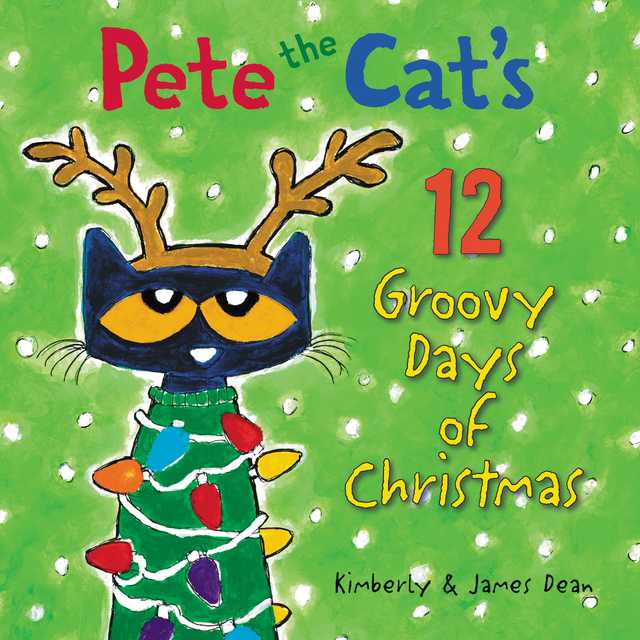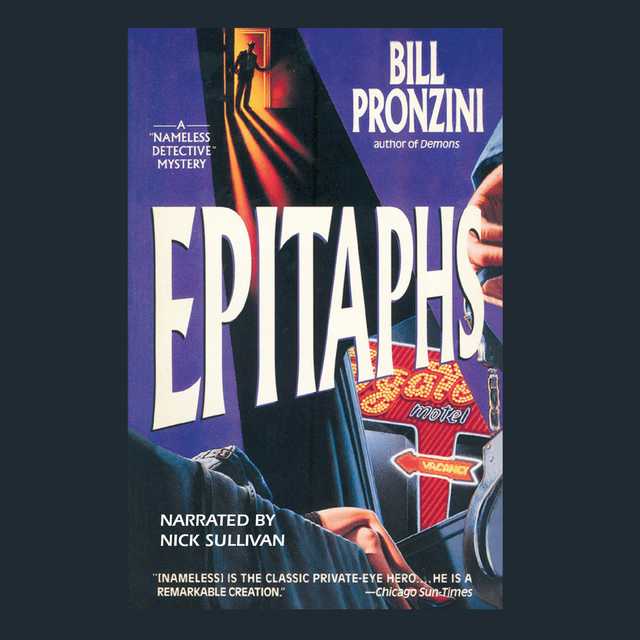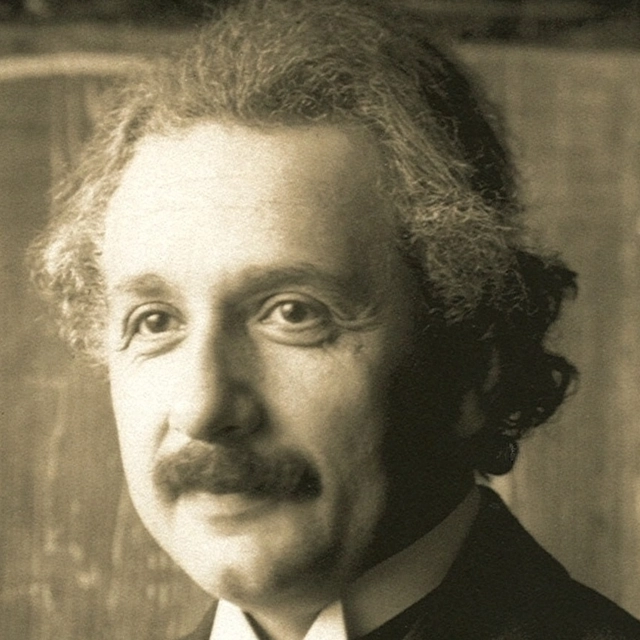The Half-Drowned King Audiobook Summary
An exhilarating saga of the Vikings that conjures a brutal, superstitious, and thrilling ninth-century world and the birth of a kingdom–the debut installment in a historical literary trilogy that combines the bold imagination and sweeping narrative power of Game of Thrones, Vikings, and Outlander.
Centuries ago, in a blood-soaked land ruled by legendary gods and warring men, a prophecy foretold of a high king who would come to reign over all of the north. . . .
Ragnvald Eysteinsson, the son and grandson of kings, grew up believing that he would one day take his dead father’s place as chief of his family’s lands. But, sailing home from a raiding trip to Ireland, the young warrior is betrayed and left for dead by men in the pay of his greedy stepfather, Olaf. Rescued by a fisherman, Ragnvald is determined to have revenge for his stepfather’s betrayal, claim his birthright and the woman he loves, and rescue his beloved sister Svanhild. Opportunity may lie with Harald of Vestfold, the strong young Norse warrior rumored to be the prophesied king. Ragnvald pledges his sword to King Harald, a choice that will hold enormous consequence in the years to come.
While Ragnvald’s duty is to fight–and even die–for his honor, Svanhild must make an advantageous marriage, though her adventurous spirit yearns to see the world. Her stepfather, Olaf, has arranged a husband for her–a hard old man she neither loves nor desires. When the chance to escape Olaf’s cruelty comes at the hands of her brother’s arch rival, the shrewd young woman is forced to make a heartbreaking choice: family or freedom.
Set in a mystical and violent world defined by honor, loyalty, deceit, passion, and courage, The Half-Drowned King is an electrifying adventure that breathtakingly illuminates the Viking world and the birth of Scandinavia.
Other Top Audiobooks
The Half-Drowned King Audiobook Narrator
Matthew Lloyd Davies is the narrator of The Half-Drowned King audiobook that was written by Linnea Hartsuyker
Linnea Hartsuyker can trace her family lineage back to the first king of Norway, and this inspired her to write her debut novel, her trilogy about the Vikings. Linnea grew up in the woods outside Ithaca, New York, studied engineering at Cornell University, and later received an MFA in creative writing from New York University. She lives in New Hampshire with her husband.
About the Author(s) of The Half-Drowned King
Linnea Hartsuyker is the author of The Half-Drowned King
More From the Same
- Author : Linnea Hartsuyker
- The Sea Queen
- The Golden Wolf
- Publisher : HarperAudio
- Abraham
- American Gods [TV Tie-In]
- Dead Ringer
- House of Sand and Fog
- Prey
The Half-Drowned King Full Details
| Narrator | Matthew Lloyd Davies |
| Length | 15 hours 33 minutes |
| Author | Linnea Hartsuyker |
| Category | |
| Publisher | HarperAudio |
| Release date | August 01, 2017 |
| ISBN | 9780062683656 |
Additional info
The publisher of the The Half-Drowned King is HarperAudio. The imprint is HarperAudio. It is supplied by HarperAudio. The ISBN-13 is 9780062683656.
Global Availability
This book is only available in the United States.
Goodreads Reviews
Will
June 29, 2022
Ragnvald Eysteinsson (hereafter referred to as Rags, with apologies to Dave Righetti, although Hartsuyker pronounces it Ron-vald, so Ron might have worked better) is a pretty decent young man, by the measures of the time. Young (20), strong, lithe, and happy to be on a raiding mission with the impressive Captain Solvi, a Loki-type figure. Rags has been a productive member of the crew and is having a good time as the mission nears its end. Downside is that Solvi had been biding his time until the right moment, which has now arrived, and Rags is unceremoniously tossed into the chilly waters of the ninth century North Sea. One might be tempted to say the waters off Norway, but the formation of that state had yet to take place and the beginnings of that process constitute one of the centerpieces of this novel.Linnea Hartsuyker - from her Twitter pagesRags, the legitimate heir to his family’s land, had come to this aqueous situation as a result of an unfortunate turn in his lineage. Grandfather Ivar had been a king (jarl) on his land. Of course, you could hardly swing a battleaxe without dinging one of these petty kings, with their relatively small holdings. But Ivar’s son, Rags’s father, Eystein, had been a boaster and drinker, which left him dead and his land, and family in the hands of the singularly unpleasant Olaf. Rags about to arrive at his majority, Olaf preferred to remain jarl of this particular realm by paying to have his stepson disinherited with extreme prejudice. Problem is, Rags survives. Awkward.The late ninth century was a time of ongoing conflict (and which time isn’t?), in which the petty kings (did not make that up, that is what they were called) engaged in frequent conflict to seize or defend land. Consolidate here, lose a bit there. It gets tiresome, all this warfare. But then this kid, Harald Hårfagre (Fairhair), shows up. Teenager, military prodigy, master of Mixed Viking Arts. Has a clever uncle to help guide him, and a big dream. He wants to unite the myriad kingdoms into an actual nation, Norway. (The seven kingdoms?) It seems there is this trend going on at the time, of smaller, tribal areas clotting together to form larger, scarier entities, and forming one in Norway was, in considerable measure, necessary for self-defense. Buckles will be swashed. Yeah, he is in his twenties, but I could not get out of my head the image of Mets Angels pitcher Noah Syndegaard as Harald. - From Muscle MilkRags, all rescued and dried off, wants to slip in to a tribal gathering called a ting, where he hopes to accuse Solvi of trying to kill him, and also challenge his stepfather for paying Solvi to do it. He wants to win back the hand (and presumably the rest) of his promised-since-childhood fiancée, Hilda. (Her father considers him a loser at this point and is not cool with her being with him.) She likes him too. In a land where might makes right, legal proceedings are not necessarily an effective solution when trying to right a wrong. In fact, as one might expect, many disputes are settled with sharp weapons instead of sharp minds. And the legal system in question is at least as purchasable as is the one in place today. There is a lot in here about the codes of honor extant at the time. Swearing allegiance to someone was a big, life-and-death deal. Upside is that swearing allegiance to the right person might get you the backing you need to defend your land, or maybe take someone else’s. Of course, swearing allegiance to the wrong sort could present terminal challenges.Following Rags’s adventures offers one a fascinating look at Viking culture. Through his experiences, we get to see what was considered fair play, get a sense of familial relations, see what passed for law, and government, and even have a bit of a look at how people made a living. One of the most fascinating elements, and not in a good way, was the treatment of women.A 14th century rendering of Harry the Blonde – from WikimediaBut was he really blonde? These guys were known to bleach their hair, for real. Hildie, quick, come look. Did I get it all? Did I miss any spots? How long to I have to leave this stuff on?Speaking of which, Rags has a sister, Svanhild, 16. And she is amazing! (Svanderful?) She is stuck with the same evil stepfather as Rags. While Olaf may not manifest carnal intent toward her, he would like nothing more than to marry her off strategically, to secure a much-needed alliance with a stronger family. Not much interested in the bear of a guy Olaf has in mind for her, and feeling pressured, she strikes out on her own, not generally a big 9th century move for young women. Will any of your fine choices for husbands take me raiding with them? Or will it be halls and children and first wives whose rule is law? Will I be left at home while my men go out and live? It gets complicated. But what shines through is her eagerness to experience as much of life as she can. No sitting home spinning, cooking, and popping out mini-Vikings for this young lady. Much more Boadicea than brood-mare, more Valkyrie than Vanity Fair, Svan is faced with some very difficult choices, and manages to manage. She may be a relatively tough cookie physically, but that is not what gets her through. In the sagas the women got their way by being bolder than the men who surrounded them. What they could not do with steel, they did with will. She is challenged by an ignorant sort on the supposedly easier life women of the time experience. Her mixture of ruthlessness and innocence was charming, and he could never decide whether he wanted her to keep her pretty pictures of the world, or learn his own cruel lessons. “What would you do, Svanhild, I wonder, to save your life? To save the life of your child?” Another woman might have bent then, acknowledged that he knew of things she could not. Svanhild lifted her chin and said,” “I don’t think you know what mothers must do, have done, to save their children’s lives. My mother”—she shook her head—“my mother sacrificed her spirit, I think sometimes, so that Ragnvald’s land could be protected until he grew up. I wonder if it was worth the cost, her marriage with Olaf. One of the really wonderful things about this novel is that it does not stuff a 21st century perspective into a 9th Century world. While Svan’s adventure may resonate with contemporary understandings of gender, there was precedent for such behavior in that era. In the case of Rags, he does some pretty amazing things, but he also engages in behavior that is appalling by today’s standards. The original Viking cruise – from Gettysburg.eduThe novel portrays challenges males and females faced in that primitive time. Young men were expected to be adept at military combat. They had to engage in battle to maintain control of their land, presuming they had any, and woe to him who was less than a physical specimen. If you want to keep your land, you had better be able to defend it against all attackers. (I could certainly see this happening eventually as a possible model for apartment distribution in NYC.) Something like 33 Percent of Viking men did not make it to adulthood. 35 percent of woman did not see 30. (see death by childbirth) Even among those who managed to make it past adolescence, average life expectancy was on the dark side of 40. Women were regarded as chattel more than anything. And while they may have had influence, particularly were one to be #1 wife in a powerful household, they had little power. Some of the descriptions of how they were treated will definitely make your blood boil. Hartsuyker shows diverse ways by which women coped. I wanted my women characters to be plausible for the time-period, while reflecting the fact that women are people, every bit as much as men, and would rebel, have ambitions, and struggle against their limitations. I’ve tried to represent different ways that women would deal with a violent society in which they had fewer rights than today: Hilda goes along to get along, Ascrida is nearly broken by what she’s endured but still tries to make choices to keep her family safe, Vigdis uses her sexuality to further her ambitions, and Svanhild, the heroine, makes rash and idealistic choices, and then has to face the consequences. - from the Qwillery interviewThis is an historical novel for which Linnea Hartsuyker has done a considerable amount of research. But it started with one particular bit of intel. When I was in my teens, my family embarked on a project to trace our ancestry and identify our living relatives. Through church records in Sweden and Norway, we found that Harald Fairhair (Harfagr), the first king of Norway is one of our ancestors. - from her blogAdventuring headgear of the age, available, no doubt, at Amazon. Monographing is extra. Many of the characters actually existed, although some had to be invented to keep the story moving, and to fill in historical gaps. You might not want to google too much information on Viking history if you want to avoid spoiling sundry outcomes in this novel, and the two that are planned to succeed it. There was another draw to the era for Hartsuyker. I grew up in the middle of the woods in upstate New York, and my family that is very into doing things by hand. We baked our own bread, and did fiber arts like weaving, sewing, and knitting. We heated the house with wood and coal fires, and had to split and chop wood all summer. I think that is why I’ve always been drawn to history, eras which required more physical labor than our own, and making things from scratch. - from the Qwillery interviewHistory was not the only consideration here. Hartsuyker also looks at myth-making. The era was one in which legend played a large role (another resonance with today). Where does history leave off and a good story (fake news?) begin. One character, for example, is telling his own history, and is challenged when it is clear that he might just be embellishing a teensy bit. “You call me a liar?” Hakon roared. “The songs say what I will them to say.” And I am sure his was the largest audience ever, too. Rags has some notable successes in the field, and is modest about those, but is encouraged by people with greater political savvy to at least own up to, if not fluff up the tales to enhance his own standing among his peers. A Viking house – from AncientPages.comThe current uptick in interest in things Viking touches contemporary concerns. In a recent interview on Late Night, Seth Meyers asked CNN political reporter Jake Tapper what question people asked him most when then encountered him on his vacation. Tapper’s response, “Are we going to be ok? Are we going to survive this administration?” certainly speaks to existential concerns. And if everything goes kerblooey, we may again become more reliant on physical skills and the need to fend off rampaging hordes of armed attackers. There are elements of fantasy here as well. After being unceremoniously tossed from his ship, Rags has an encounter with the goddess of the deep, Ran, and sees an image that will forge his future path. Another character is said to be a seer. Another has an issue with being dead. These are scattered throughout, and are few in number, but do give the story a tincture of fantasy. Of course with tales of all sorts being told at tings, it is no large stretch to accept that, in this pre-scientific world, an acceptance of the supernatural could be…um…natural. With The Half-Drowned King, Linnea Hartsuyker has launched a successful raid on the worlds of both historical and fantasy literature with her Norse saga. There is no doubt she will be returning home with considerable booty. This novel is not just a rollicking adventure. It is not just a wonderfully rendered fictionalized account of some very real historical events, offering a portrait of the lives of that era. It is also a very engaging tale of a brother and sister, both trying to make their way in a hostile world, both coping with questions of freedom versus a constricted security, both facing challenges in having to balance justice with vengeance. While they may not be written at the highest possible level of character portraiture, they are drawn well enough to make them relatable. You will care for both, even if you are likely to take exception to some of the decisions they make. Time to sharpen your pointy helmets, lighten your hair, put a fine edge on the nearest battle-axe and strap on some chain-mail. Vikings rule in The Half-Drowned King. It is not a short book, but you might fight your way through it without coming up for air. Eager readers rushing to the bookstoreReview first posted – September 9, 2017Published -----hardcover - August 1, 2017-----trade paperback - June 26, 2018 =============================EXTRA STUFFLinks to the author’s personal and Twitter pagesThere are two more books planned in this trilogy. The second, The Sea Queen (2018), is written. I am not sure if the third, The Golden Wolf (2019), has been completed yet. This tune seemed appropriate, for Svan anyway. I looked for a performance in Oslo, but came up short.Articles by the author worth checking out-----Five Surprising Things I Learned About Vikings - on the Fantasy Literature site ------To Live Like the Women of Viking Literature - on LitHubInterviews-----(Print) The Qwillery - mostly on writing process, but there are some wonderful bits of intel here-----(Video) - Library Love Fest-----(Audio) - RedCarpetCrash
Truman32
August 20, 2017
Vikings are a baffling lot—they personify the best of what we like to think we can be—brave, adventurous, noble, cultivating incredibly bushy beards, and possessing the flair to wear horns as an accessory mixed with enough radioactive alt-right notions that would make your everyday white supremacist say, “whoa, whoa, whoa! Slow down there for a second Gunnhild, I think that viewpoint is a mite intolerant!”But if you can put aside the rape, murder, slavery, misogyny, etc. perpetrated by the good guys in Linnea Hartsuyker’s adventure The Half Drowned King, you will find that Viking stories can also be pretty exciting. Ragnvald and his little sis, Svanhild, live under the care of their cruel stepfather who more than likely killed Dad and took his land. Ragnvald has embarked on a fine carrier of raiding along the coastline until his captain, Solvi (hired by that stepdad), stabs him in the face and throws him into the drink to drown. Svanhild meanwhile, has been instructed to marry an enormous and gross old man who is friends with her stepdad. These two kids are in t-r-o-u-b-l-e!Like a couple dancing the paso doble, Ragnvald and Svanhild begin The Half Drowned King together, but then separate to find their own rhythms and stories. They will eventually sashay their way back to each other, but only after much hardship, fighting, royal intrigue, and other Viking wackiness has ensued.Hartsuyker’s book is an entertaining epic. I picked it up after seeing it on a list of books to read while waiting for the next Game of Thrones novel to come out (it’ll be here any day now, I’m sure!) and while this bold Viking tale is more along the lines of historical fiction with no fantasy elements, it does match up as a lite alternative for fans of that series.
martist
March 23, 2018
Ragazzi questo libro mi ha fatto uscire da un blocco del lettore assurdo, quindi non smetterò mai di amarlo! Sebbene abbia trovato qualche piccolo difetto devo ammettere che se siete amanti della cultura nordica e dei vichinghi non potete farvelo scappare. Anche se lo consiglio pure a chiunque voglia evadere dalla realtà tuffandosi in un mondo di guerre, tradimenti, alleanze e amori! Bellissimo e a breve farò una video recensione sul canale perchè ho bisogno di parlarne in modo più approfondito!
Fonch
May 22, 2020
Ladies and gentlemen, I do not know if i will have time to finish writing this review because my father wants us to continue with a doctoral thesis, and he needs my help. Therefore, it is quite possible that you will not be able to finish this review today.This book has surprised me very favorably and I liked it much more than I expected, even if I have actually put three stars the final rating is 3.5 stars, and i did not rule it out, to put, four stars. The author recreates with enormous fidelity the Nordic world of sagas that I love so much telling the story of Rangvald. A character, who seems to have really existed and was necessary for the future of Norwegian, i must say that, of all the Nordic countries, perhaps Norwegian must have a special weight in my heart, since a cousin of my mother who is a marine biologist and lives in e n Valencia married a Norwegian, hence I feel inclined towards this particular country. Although I do not know unlike my sister I have always felt more inclined by Norse mythology than by Greek and Latin. In fact, I'm very fascinated by the north. The thing is, I was idyll back when they fell into the hands of Protestantism, and then social democracy fell into a worse heresy, but love is resilient, and they don't want to die. I still remember the greatness of yesteryear, which has recreated the writer Linnea Hartsuyker.It is worth acknowledging, perhaps this is one of the few flaws in this book that this is the first part of a series of books, which tells the unification of Norwegian, and the relationship between Rangvald. It is curious, because reading Susan Peek's novel "St Magnus the Last Viking" https://www.goodreads.com/review/show... that told the story of the patron saint of Orks, but in the prologue Susan Peek tells of writing a story about St. Rangvald. Although it has nothing to do with this book, since Linnea Hartsuyker tells us about the pagan Nordic world, while my friend Susan Peek tells us about the Christian Nordic world. On these topics I recommend that you read my reviews that I wrote about"A Boy of Good Met" by Bjornstjerne bjornson https://www.goodreads.com/review/show... and one of the last reviews that I wrote"Vacation in Carnac, a girl named Osmi, and Dangerous Play" by Mika Waltari https://www.goodreads.com/review/show... where he spoke of Christianity in the northern lands, and how they did not degenerate the Vikings, but made them better. On this subject I also recommend this book "Warm North Wind" by José Miguel Cejas Arroyo. A book that if providence wishes I will acquire and read very soon, because of my huge interest in the Nordic countries https://www.goodreads.com/book/show/2... But going back to the novel, which we're dealing with, I like how Linnea Hartsuyker just as the Nornas has linked the characters' fates and weaved them, and sometimes separating them. The protagonist Rangvald is a man forced to participate in looting expeditions, to become a man, and regain family honor, since his father Eysteinn was a bluff, who bragged, but little else, who was killed by Olaf, than he did as well as Claudio (the incestuous Danish king) marries the protagonist's mother, much to the misery of the protagonists Rangvald, and Swanhild to which the author gives almost half the prominence. I would say that maybe each chapter, or two, tells the story of Rangvald and the next chapter and the next two, tells Swanhild's story. In fact, that's one of the attractions of the book. Of course there are parts where neither of the two appear as when Harald, who the prophecies are supposed to consider to be The Unifier of Norway. It is fascinating the reconstruction by the author of 11th-century Norway. The complexity of the family. An owner may have a main wife and favorite Olaf the protagonist's stepfather is married to Rangvald's mother and has Vigdis, and to top children of his former marriage Sigurd and Hjallborn and servants such as Einar and Sveinn. Not only can you have amantas, you can also have more than one wife. Polygamy wasn't abnormal at the time, and it didn't look bad. Alliances were also made, precisely Swanhild's fear is marrying the passionate, and disregarding Thorkell (it is a fear that underlies the whole novel). The antagonist of the novel (I resist to call him villain) Solvi is married to a woman who does not love him,and which he has grown tired of wanting. Maybe Solvi is one of the most interesting characters. It is not that I believe, like that charlatan of Rosseau https://www.goodreads.com/author/show..., that society makes individuals bad (as will be seen in Dean R. Koontz's "Intensity" https://www.goodreads.com/book/show/3... now famous because in his novel "The Eye of Darkness" https://www.goodreads.com/book/show/3... prophesyed that in a place in China called called Wuhan would emerge a viral epidemic. . It shows us in "Intensity" that evil exists.) However, the attempt to kill Rangvald is more than an act of evil is a case of cold legalism, and filial fidelity. That shouldn't be the case, because as the reader will read, he has a lot of things to criticize his father. In addition, he is troubled by his sparse size and by the wounds he has suffered during his childhood, but we see that despite the folds of his soul he tries to do the right thing, as seen in Theng. Some of his father's actions, as his alliance with Olaf, don't like him.It is a fascinating character, who earns but the reader's appreciation, yes, his esteem, besides that as he will see the user who has the pleasure of tasting this novel there is one thing that I like about him. The reader already knows what will happen, and that he has everything lost beforehand, because in the deterministic world of Norse paganism, the prophecies, the songs (another of the hits of the book show how the songs serve a purpose, to consolidate the power of the king, and as propaganda) seem to condemn Solvi's cause from the beginning. The fatum, the hade, as in any pagan society that was prized, is elusive. I think it wouldn't be like that in the real story. The characters would face each other, and then the victors would write the story, as most often happens. It is rare, but it also happens, that the vanquished can write their history and it prevails over the victors.That's the problem of Harald, and from the thinking head his uncle Guthorm, who has it all handsome, rich, intelligent, is a great warrior, and is destined to triumph in this case to unify Norway under a unique command his. It reminds me a lot of the three great Shogunes of Japan Oda Nobunaga, Toyotomi Hideyoshi, and Tokugawa Ieyasu. It's almost the same thing that you're two thinking heads want to end the civil wars and build a strong Norway, which can compete with Sweden, and Denmark. The tactics to achieve this are war against hostile kings, or diplomacy to attract King Hakoon, even if the relationship throughout the novel is strained. This I think, that will be one of the plots of the following novels the frictions between Hakoon and Harald. Out of envy from the first to the second, and for the actions of one of his independent sons.Another thing I liked is that the hero Rangvald is not only a warrior, but a counselor, a wise man, who is courted by the powerful. Here Rangvald has reminded me a lot of Tiglath Assur, the protagonist of The Novel of "Assyrian" by Nicholas Guild. It is true that Linnea Hartsuyker's novel does not have the greatness of Nicholas Guild's novels, nor those of Mika Waltari https://www.goodreads.com/book/show/3... https://www.goodreads.com/author/show... https://www.goodreads.com/author/show... Part of this is seen in the way Rangvald settles with his evil stepfather, and as instead of murdering his opponent's entire family. I'm thinking about Sigurd, and Vigdis. I think it's a smart move, although it may lead to problems in the future and future installments of this saga. It is quite possible that they are part of future subplots of the cycle created by Linnea Hartsuyker, however, I recognize it as true. A northern lord a Jarl would have behaved like Rangvald. It is noticeable that Linnea Hartsuyker has soaked up the spirit of the sagas and has managed to imbue her work.However, there are some more modern things in which the author stops, such as the treatment of women. We see this with Swanhild, and with other women, who appear in the story. He has also been able to grasp the cruelty of Nordic society, without falling into the amorality of modern sagas. This is seen in the way they treat bandits and outlaws. It's a very violent society. I also like how he demysss the songs, for example in Rangvald's battle with the undead, and tries to give him a rational explanation of the myth, as Evemero did https://es.wikipedia.org/wiki/Evémero There are some characters that I love as Solvi's Christian friend in Friess (this is another thing I like that Christianity is treated from a distance, and with respect, and do not attack as many of today's novels do) yet we are not looking at a novel like "Eric brighteyes" https://www.goodreads.com/book/show/7... by Henry Rider Haggard where although society is pagan, the role is already glimpsed, the role is already glimpsed, the role redeeming and providential, who will have Christianity in the future. But I am glad that, even if this thesis on display has not been embraced, Christianity is treated from a distance, and not attacked, for me that has been very important and I thank the author personally. Oddi, Hakoon's natural son, who plays what in Spanish theatre was known as the funny guy. That is, a comic supporting character, who enlivens the play. I like to confront Oddi's realism with Rangvald's sound idealism. Another character I love was Vigdis, if I know I'm a degenerate satyr (you know I don't have half-term I like very holy women, or very sinful), but it is that those kinds of women like a lot of male audiences. I think, this character so sensual, and so ambitious can give a lot to talk about in later novels. Another thing, which has fascinated me, is the attitude of the powerful, both Hakoon, and Harald, when Harald does not tell them what they want to hear, when Rangvald seeks the most thoughtful, and gives the right advice. The attitude of both Hakoon and Harald, or with me, or against me, is well described, and it is made by many great personalities of history. Of the bare count, Swanhild's story may not have convinced me. It reminded me a little of Queen Gorgo's story in 300. A friend I loved very much and I went to see that film, and although she and I are very different we agreed on one thing in Queen Gorgo's attitude, as much as she loves her husband, as she can allow such a worthy character to degrade himself so much. The same thing happens to me this time. It is true that Solvi is not Theron and that stories of couples who do not take and who end up in love have been seen in "The Scarlet Pimpernel" https://www.goodreads.com/book/show/1... and in film as risky lies, and when the marabunta roars. Apart from that subplot I don't have the feeling that although I read a great novel it lacked something that would make it go from the great to perfection. It was lacking in that spark that distinguishes the good from the excellent. Yet even though it closes a very important plot. The ending remains very open, and there are many issues that need to be concluded in later versions. I've already raised some. Even if it's not my favorite Viking novel https://www.goodreads.com/book/show/4... and I also believe, so will the Goodreads user. Hael and until our next meeting.
switterbug (Betsey)
August 31, 2017
This book was a one-off for me. I don’t watch Game of Thrones nor do I typically watch battle sagas of the early centuries, but I had a gut feeling about this well-researched novel, and I’m glad I followed my instincts. This historical legend, filled with myth, sorcery, and the harshest landscape imaginable, was rowdy and bloody, rugged and visceral. And a woman stole the show! Hartsuyker created strong, flawed characters that would be considered heinous in modern times, of course. She didn’t sugarcoat them by trying to couch them prettily for 21st century readers, just to pander to modern morals. She stuck to the time, place, and perceptions of the ancient Scandinavian way of life.Ragnvild Eyestein is the primary protagonist, a young man who wants to be counted, and fight back for his land that his grandfather, a powerful king, had secured, but his carousing father had lost, due to the love of drink. Set to marry his childhood sweetheart, Hilda, he is now also old enough to find a mate for his wily sister, Svanhild, rather than leave it in the hands of his betraying stepfather, Olaf. But Svanhild is free-spirited and willful, and wants to speak for herself. The relationship between Svanhild and Ragnvild, dimensional and heartrending, was the locus of the story. Honor and sacrifice are the key ingredients to this tale, filled with savage landscapes and often even more savage men.“Every free man should know how to forge a sword, carve a shield, build a boat, set a trap, and defend himself with a sword, dagger, and ax…” And this novel has it all. I didn’t think I’d enjoy the battle scenes, but they were fascinating, more like chess, with a lot more blood! And I grew attached to the characters, especially Ragnvild and Svanhild. Exciting, with breathtaking scenery and adventure on every page, you won’t be disappointed.
Gary
September 24, 2019
This is the first in a series of historical fiction stories set in 9th century Norway. What might be of interest in 9th century Norway at this time? Well... Vikings of course! The story revolves around Ragnvald Eysteinsson and his sister Svanhild. Ragnvald is the son of Eystein Glumra (or Eystein the noisy) - he was a bit of a braggart. Maybe his father wasn’t as well thought of, but Ragnvald’s grandfather was a king! 👑 (“Well I didn’t vote for you...” best if spoken with a pepperpot voice). Descended from a king sounds impressive, but at one point in the story a character says “you could hurl a stone in any direction and are likely to hit a king.” At that point in history there were quite a few lesser kings and they were not very well organized. That kind of leads in to another main element in the story - King Harald. Harald was considered to be the first true king of Norway - gradually uniting many lesser kings under his rule (or crushing them). So what’s historical and what’s fiction? Harald is real. The author (Linnea Hartsuyker) has a note on her GR page stating that her family traced their genealogy all the way back to Harald. Ragnvald is real although there appears to be some disagreement about his exact relationship with Harald as well as some of his deeds. Ragnvald’s father and grandfather - as well as his brother and children are as well. I’m not sure about the other supporting characters. Hartsuyker did her research very well so I suspect many of them are based on actual people - mixed in with fictional ones and building an interesting story around it.So what about the story? Conflicts escalate early on and there a lot going on in some spots. As I mentioned, the story is told from the POV of Ragnvald and Svanhild - with most chapters switching between the two of them. One thing I will point out is that you don’t have to wait long to learn about ‘half drowned’ - I think that plays out in the first 10 pages or so not a huge spoiler. Staying away from too many specifics the story includes betrayals, pledges of loyalty, broken pledges of loyalty, murder, duels, love, jealousy, games and contests, sorceresses (sort of), feasts, festivals, trials, battles (land and sea), a draugr (I hated those things in Elder Scrolls), prophecies, and oh many messed up family relationships. It took me a while to get all the characters down... that’s probably just me though. Also, despite all the things going on, the story did seem to drag on in spots and the dialogue was very dry. I like books with humor sprinkled in - and there wasn’t much of that here. There’s a lot of male chest pounding and testosterone driven behavior. Svanhild was added in for a female’s perspective, but even her character was bound by societal rules or norms from the time. Marriage requirements were a lot less than they are today... share a glass of ale and say a one line prayer... and you are good to go!Overall it was a fun story. I’m going to continue on with the next one to see where it goes next.
Twins.reading.books
December 13, 2018
Being a GOT fan will make you love this book even more! Linnea is very special, and I can say that #TheHalfDrownedKing & #TheSeaQueen are thr most surprising books I've read this Year, definitely a big applause for the masterpiece mind of the Author!.It really will make you explore the details and will lose your mind, I'm proud to say that it took me less than one week to devour them even though they are so long pages but I'm being so honest that I even skipped some hours of sleep just to read them, I couldn't go to sleep without knowing how scenes are continuing! If you're a fan of fantasy and Viking this book is more than perfect!.The book takes place in Norway set in 9th century and the details that the Authkr describes through the lines makes you imagine the scenes in a very perfect way, it really took my imagination beyond I'd think of Vikings! The story talks about Ragnvild Eysteinsson a descendant of kings, he is a young and powerful man who figts back for his land that his grandfather had secured but his fatger had lost in reason of some issues that we can predict! The story gets more thrilling when his step father betrays them and a lot of scenes are breath-taking!.Another main character of the book is Ragnvald's sister, Svanhild who is a brave person that is able to choose herself whom to live with and I'm really happy to see that Linnea has written strong acts about the feminists because I've read a lot of Saga books and most of them leave women like innocent and very weak in personality, the Author describes very interesting and emotional details from two different perspectives, how the man or woman felt the situations and how they managed them! .The book is a full emotional package, it has mystery, thriller, romance and masterpiece story what can I say more other than I recommend you to read it!!!
Rick
March 08, 2017
Disclosure: I read an advanced reader's copy loaned to me by a friend.I'm pretty choosy about historical fiction. Having read quite a few of the original sagas on which this novel is based, I admit to approaching it with a bit of trepidation. Surely it couldn't live up to the real thing, I thought. Surely the author would make some elementary mistakes about early medieval mentality. I'm pleased to say that I was totally wrong. This is a great book, and one of the best works of historical fiction I've read since O'Brian. Admittedly it may not be for everyone, as it centers around themes of revenge and violence - but, after all, those are dominant themes in the saga. Hartsuyker takes a brother/sister pair as her co-protagonists, and follows them through a tour of late 9th-century Norway and some of the real (Harald Fair-Hair) and fictional characters that populate it. Ragnovald is seeking vengeance against his stepfather for actions that occur both early in the novel and offstage. He links his fate to a series of striking characters, his stature and reputation rising as his wise counsel and heroic actions impress a series of jarls and kings. His sister, Svanhild, also has to make her way in this world; unhappy about the impending forced marriage arranged by her stepfather, and anxious to locate Ragnovald, she strikes out on her own ... at least, as much as a woman in Saga Norway could do. Hartsuyker did a good job of making Svanhild an engaging and active protoganist while still respecting (and explaining) the gender norms of the period.Both characters were well drawn, and exhibit some development across the tale. Yet it is the surrounding cast - Oddi, Hakon, Heming, Harald, Thorkell, etc., the author's careful recreation of the world of the 9th century, and the fast-moving plot that makes this novel shine. I recommend this to anyone interested in viking-era Europe, and look forward to the promised future volumes featuring Ragnovald (and, hopefully, Svanhild). (less)
Fariba
September 19, 2018
Can’t wait to read the sequel. I hardly ever buy a brand new hardback, so I clearly loved the first book.
Scott
September 24, 2017
4 1/2 starsI really enjoyed this. Maybe others wouldn't. Maybe there are flaws. But maybe I don't care?I do like that characters were flawed, trying to do what they thought was best, not just evil or always good.One thing that troubled me as I approached the end was the concern of a quick ending. And it was, in a way, though still satisfying. The author's notes reveal there are more books to come. I'll be pre-ordering the next without thought.
Justin
July 25, 2017
(This review was posted to the Staff Picks page of White Oak Library District and may be used for Reader's Advisory.)I'm currently reading an ARC that I found at ALA called "The Half Drowned King" by Linnea Hartsuyker. This is a historical fiction novel that takes place in Viking-era Norway. Ragnvald Eyesteinsson grew up reading tales of myth and legend in the Viking sagas, believing he would one day inherit the lands that were rightfully his from his stepfather after his father died when he was a boy. Coming home from a Viking raid in Ireland, Ragnvald's face is cut and he is thrown from his ship by a man he believed to be his friend and leader. He did not die, however, and his soul would not rest in the Ran's underwater halls that day. Ragnvald wakes up to come home and seek what is his by Norse law and seek revenge upon his stepfather who he believes orchestrated the attempted murder. All the while, Ragnvald's sister Svanhild must endure the trials of being a woman at this point in history. She wants more than to be taken by a man and wait to grow old, so she journeys off to find Ragnvald once again, stopped and slowed along the way by her brother's attempted murderer who wishes to marry her.If you're a fan of historical fiction of this period, you're in for a wild ride. Much like Bernard Cornwell's Saxon Chronicles, Hartsuyker's debut novel follows Ragnvald and Svanhild across Norway, into Northern Germany, and across Nordic seas. Its epic landscape is imagined thoroughly by very careful research into classic texts, including many of the Norse sagas. While the story is captivating, I find most interesting the setting and culture of 10th-11th century Norway. This was a period of bloodshed, brutality and war. When many think of the people of this region in this period in history, we think of savage barbarians pillaging, burning, and committing acts of sexual violence. While this all happened, there was, however, also a deep respect for honor, loyalty, family, law, religion and nature among both men and women. All of these themes are explored in depth in "The Half Drowned King". It comes out August 1.
Marta
July 04, 2017
The sense of living in a dangerous time permeates every page as does the feel of the natural world of Norway in the 900's. The story is told from the points of view of Ragnvald and his sister Svanhild. Loyal to eachother, they are about all they have as Ragnvald tries to re-claim his deceased father's land and Svanhild tries to avoid marriage and have a say in how her own life will unfold.My description is not doing the story justice. The sense of place, the danger of the times, the tense wars and alliances brings to mind the Game of Thrones series without the gratuitous sex and violence-although there is violence a plenty and Vikings were not big respecters of women! However, it feels drawn the way it needs to be to tell the story well and recreate a fascinating group of people.
David
August 28, 2017
Received as an ARC via my employer Barnes & Noble. Began 8-22-17. Finished 8-28-17. What if the Game of Thrones characters were Vikings? This would be their book, filled with political intrigue, battles (and I'm sure that in the rest of this trilogy there will be even bigger battles!), traitors, rotten step-fathers, allegiances forged by marriage(some wanted, some not),assassinations, sisters getting the courage to leave their families, and kings of the Scandinavian territories fighting those in Northern Europe long before"countries" were formed. Long book, many characters, and multiple plots but the author does a great job of keeping the reader from being bogged down by it all. Can't wait for the next installment.
Frequently asked questions
Listening to audiobooks not only easy, it is also very convenient. You can listen to audiobooks on almost every device. From your laptop to your smart phone or even a smart speaker like Apple HomePod or even Alexa. Here’s how you can get started listening to audiobooks.
- 1. Download your favorite audiobook app such as Speechify.
- 2. Sign up for an account.
- 3. Browse the library for the best audiobooks and select the first one for free
- 4. Download the audiobook file to your device
- 5. Open the Speechify audiobook app and select the audiobook you want to listen to.
- 6. Adjust the playback speed and other settings to your preference.
- 7. Press play and enjoy!
While you can listen to the bestsellers on almost any device, and preferences may vary, generally smart phones are offer the most convenience factor. You could be working out, grocery shopping, or even watching your dog in the dog park on a Saturday morning.
However, most audiobook apps work across multiple devices so you can pick up that riveting new Stephen King book you started at the dog park, back on your laptop when you get back home.
Speechify is one of the best apps for audiobooks. The pricing structure is the most competitive in the market and the app is easy to use. It features the best sellers and award winning authors. Listen to your favorite books or discover new ones and listen to real voice actors read to you. Getting started is easy, the first book is free.
Research showcasing the brain health benefits of reading on a regular basis is wide-ranging and undeniable. However, research comparing the benefits of reading vs listening is much more sparse. According to professor of psychology and author Dr. Kristen Willeumier, though, there is good reason to believe that the reading experience provided by audiobooks offers many of the same brain benefits as reading a physical book.
Audiobooks are recordings of books that are read aloud by a professional voice actor. The recordings are typically available for purchase and download in digital formats such as MP3, WMA, or AAC. They can also be streamed from online services like Speechify, Audible, AppleBooks, or Spotify.
You simply download the app onto your smart phone, create your account, and in Speechify, you can choose your first book, from our vast library of best-sellers and classics, to read for free.
Audiobooks, like real books can add up over time. Here’s where you can listen to audiobooks for free. Speechify let’s you read your first best seller for free. Apart from that, we have a vast selection of free audiobooks that you can enjoy. Get the same rich experience no matter if the book was free or not.
It depends. Yes, there are free audiobooks and paid audiobooks. Speechify offers a blend of both!
It varies. The easiest way depends on a few things. The app and service you use, which device, and platform. Speechify is the easiest way to listen to audiobooks. Downloading the app is quick. It is not a large app and does not eat up space on your iPhone or Android device.
Listening to audiobooks on your smart phone, with Speechify, is the easiest way to listen to audiobooks.

